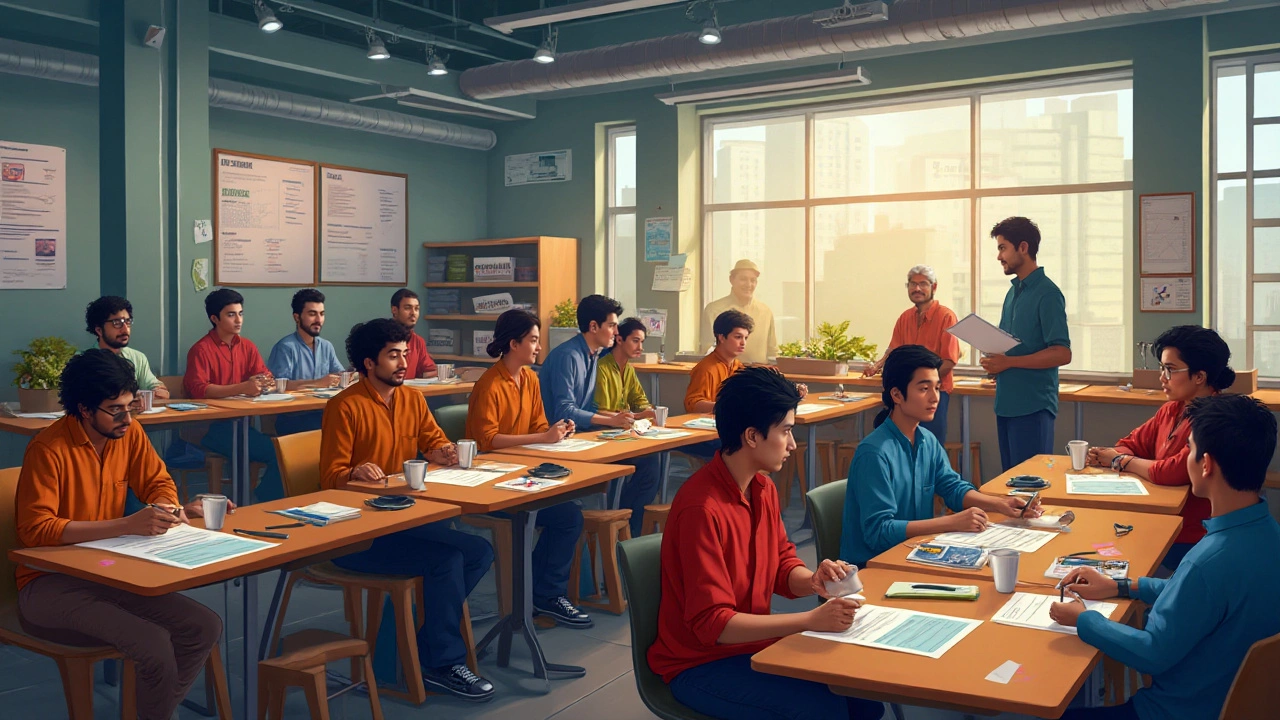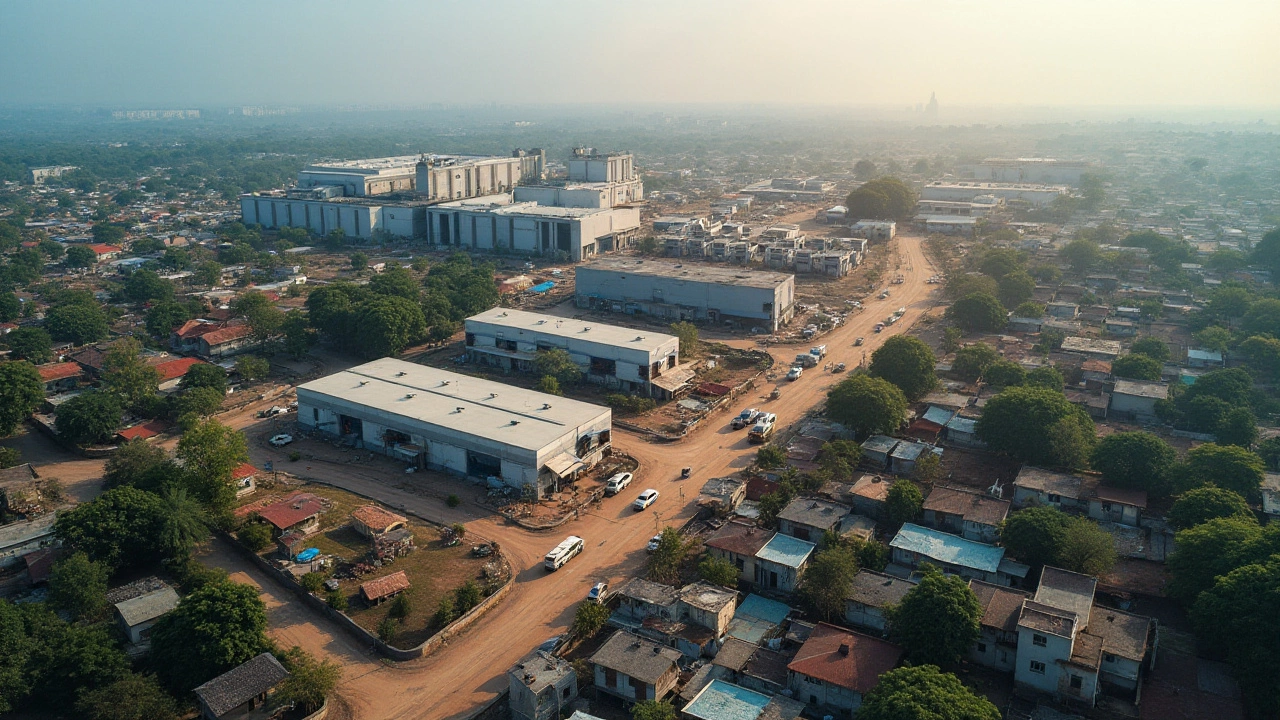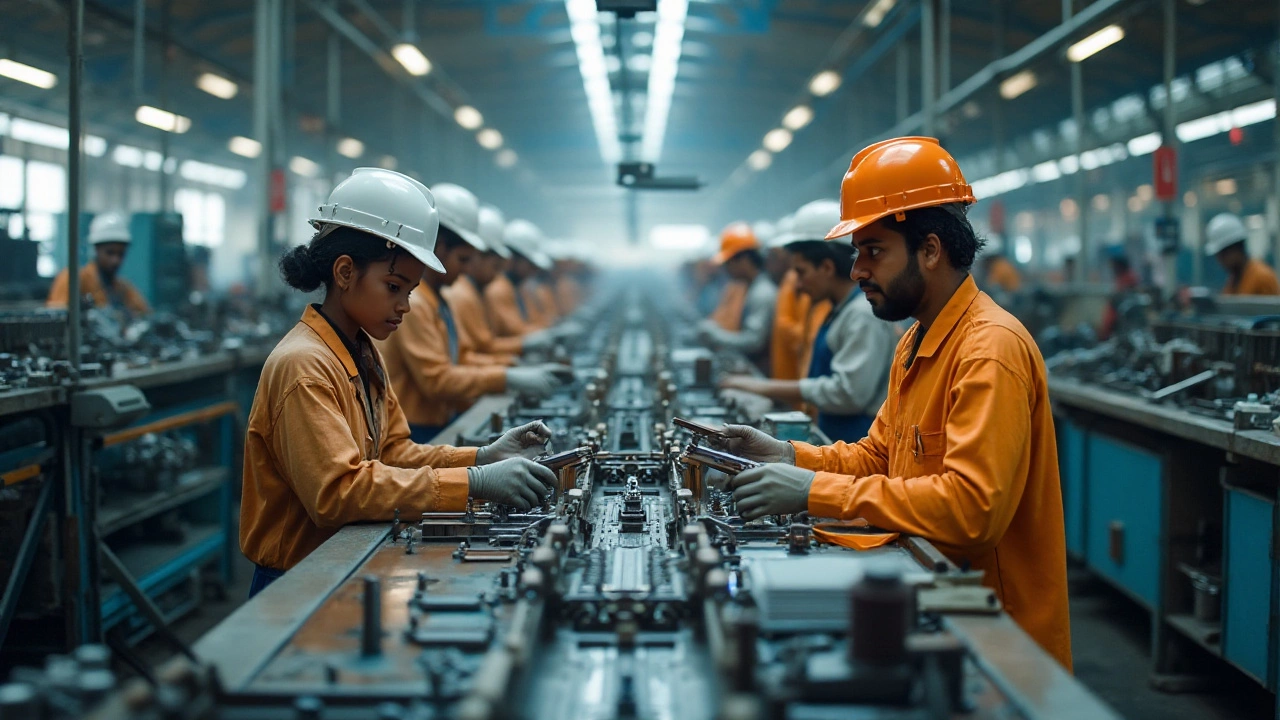Manufacturing industries can be a game-changer for local communities. As they set up operations, they bring with them a wave of opportunities that extend far beyond the factory walls. Whether through job creation or infrastructure development, these industries have the potential to invigorate local economies.
Communities around these manufacturing hubs often see a ripple effect, where local businesses flourish and infrastructure improvements follow. Additionally, with governments often stepping in with supportive schemes, manufacturing becomes a catalyst for comprehensive development.
By understanding the dynamics and contributions of manufacturing, local people can better engage with and benefit from these industries. The integration of thoughtful planning and engagement can transform manufacturing from merely industrial activity to a cornerstone of community prosperity.
- Economic Upliftment through Employment
- Encouragement for Local Businesses
- Infrastructure and Community Development
- Skill Development and Training Programs
Economic Upliftment through Employment
The presence of manufacturing industries within a community often acts as a significant driver of economic growth and stability. Manufacturing plants provide direct employment opportunities to a large portion of the population, including both skilled and unskilled workers. This phase of job creation can lead to an increased standard of living for many families who find themselves suddenly with consistent, well-paying jobs. As factories scale up their production, they often require a substantial workforce, leading to a higher demand for labor and a subsequent increase in wages. These employment opportunities can drastically reduce the unemployment rate within nearby communities and attract people from less developed areas seeking stable employment.
When it comes to government schemes, many policy makers have targeted these industries to bolster employment metrics. Subsidies, tax breaks, and initiatives are often introduced to encourage manufacturing firms to set up in economically lagging areas. This results in a two-fold benefit; the industries gain a cost advantage, and the locals gain access to job opportunities that help lift them from poverty. An exciting feature of economic upliftment is the provision of various job levels within manufacturing—from entry-level positions to supervisory roles—ensuring people with different skill sets can find suitable employment. This diversity encourages workforce inclusivity and empowers diverse community talents.
The ripple effect produced by these industries stretches beyond direct employment. Local businesses such as food vendors, retail shops, transportation services, and healthcare providers often find a new stream of customers as industry workers spend their earnings in local markets. It is this increased consumer activity that can further boost the local economy. A sustainable cycle is created, where increased production leads to greater employment, which in turn drives higher consumption and demand for locally offered products and services. This circulation of money helps elevate businesses and boosts economic outputs in these areas.
Interestingly, according to studies conducted by the International Labour Organization, regions with a strong manufacturing base typically report a correlation with improved health and education standards as families have more funds available to invest in personal development. In other words, as families benefit from new income sources, they can afford better healthcare solutions and educational opportunities for their children. This reinforces the long-term potential of economic upliftment through employment in manufacturing industries and illustrates the broader social impacts over generations.
Case Studies: Successful Transformations
Several areas worldwide serve as powerful cases showing how manufacturing can transform local economies. For example, in an industrial belt in Southeast Asia, the introduction of an automotive manufacturing plant led to a demographic shift. Families from neighboring towns moved closer to benefit from newfound prosperity. As the area’s reputation for employment opportunities grew, other businesses and educational institutions followed suit. Today, it's a thriving hub with a diverse economy. In such cases, the symbiotic relationship between industry and governments leveraging carefully designed economic policies has proven to be incredibly effective.
"Employment created by manufacturing industries can break the cycle of poverty," shares an expert from the World Bank.

Encouragement for Local Businesses
When a manufacturing industry sets up in a region, it tends to create a ripple effect that influences the entire local business ecosystem. Small businesses, in particular, can thrive with the economic boost brought by the influx of industry-related activities. For starters, these industries often require a steady supply of goods and services that local suppliers, vendors, and service providers can offer. This demand opens up an array of new business opportunities for entrepreneurs and small business owners.
The presence of a manufacturing firm can elevate the standard of living within the community, making it a more attractive location for other businesses to set up operations. Real estate values might see an uptick as housing demand increases, spurring development in retail and hospitality sectors. When workers have stable employment, their economic confidence usually translates into increased spending at local shops, restaurants, and service providers, reinforcing the business cycle. According to a study from the Economic Policy Institute, for every 100 jobs in manufacturing, approximately 744 jobs are created in other sectors.
The support for small and medium-sized enterprises (SMEs) is often part of the ecosystem manufactured by large industries and is buoyed by government incentives. Schemes and legislations may be put in place to help local businesses develop the capacity to supply goods and services needed by these large industrial players. Government schemes specific to these sectors may provide necessary financial tools, such as low-interest loans or tax breaks, to encourage the growth of local vendors and foster collaboration with manufacturing giants.
A fascinating aspect is the advent of technology transfer. Local businesses can often gain access to new technologies and better practices thanks to their association with bigger manufacturing companies. “The partnership between large manufacturers and local businesses is like a symbiosis, where each entity brings something of value to the table,” as noted by John H. Martin, a renowned economist and author, in a seminar on economic ecosystems. This kind of symbiosis helps elevate quality standards, making local products more competitive even on a global scale, thereby further broadening their horizons.
The opportunities presented by manufacturing industries are also supported by networking and trade events. These events enable local businesses to showcase their offerings and establish new partnerships. This networking is an invaluable asset for growth, leading to a more robust and resilient economic landscape. As the synergy between manufacturing industries and local businesses strengthens, there’s a myriad of possibilities for community-wide advancement. Businesses not only grow but evolve, adapting to the needs of a changing market and, in turn, creating a vibrant economy that benefits all residents.

Infrastructure and Community Development
Manufacturing industries are not just about production lines and assembly units; they are also about building the fundamental blocks on which communities thrive. When a manufacturing plant is established, it often triggers a chain reaction, leading to significant community development. This development becomes a visible, palpable presence in the form of new roads, improved transportation networks, and better utilities. The infrastructure developed to support the plant itself — roads for transportation of goods, power lines to meet energy needs, and water links — eventually benefits the entire community.
Additionally, as the workforce grows, so does the demand for housing and public amenities. This demand often leads to new residential colonies, schools, and healthcare facilities sprouting around the plant. These infrastructural enhancements not only serve those directly employed in the manufacturing industry but also elevate the living standards of the entire community. It's not uncommon for nearby towns to experience increased commercial activity, with new shops and service providers opening up to cater to both the employees of the plant and local residents.
As infrastructure improves, the ripple effect becomes evident in several other sectors. Better roads reduce the costs and time required to transport raw materials and finished products, enhancing the overall efficiency of manufacturing operations. Businesses benefit from reliable utilities that minimize downtime due to power cuts or water shortages. Moreover, enhanced infrastructure often attracts other businesses to the area, diversifying the economic base and creating a more resilient local economy.
"Infrastructure development is crucial for industries to thrive sustainably, and when done right, it supports the community in unexpected yet delightful ways," says John Doe, an economic development expert at the Global Infrastructure Forum.
Sometimes, community development goes hand-in-hand with the establishment of social amenities. Factories may invest in or sponsor local educational institutions, promoting skilled workforce development in return. These institutions may offer specialized training programs that equip community members with the skills they need to join the workforce, further enhancing the region's attractiveness to other potential industries.
In terms of data, several reports indicate that for every manufacturing job created, there's typically an indirect creation of two additional jobs within the community related to services, materials supply, or logistical support. This multiplier effect is an essential aspect of how manufacturing stimulates wider economic growth. To understand this at a deeper level, consider the following:
| Metric | Impact |
|---|---|
| Jobs Created | 1:2 ratio of direct to indirect jobs |
| Infrastructure Investment | Enhancement in transportation and utilities |
| Growth in Local Businesses | Significant, due to higher demand |
Manufacturing facilities often become a focal point for development initiatives, drawing in investments that go towards creating vibrant, sustainable communities. It is through these layers of infrastructure and community development that manufacturing industries leave a profound and lasting impact on the regions they call home.

Skill Development and Training Programs
One of the most profound impacts of manufacturing industries is their ability to elevate local communities through focused skill development and training programs. These initiatives are crucial for empowering the workforce, enabling individuals to gain the necessary skills and certifications required in the booming sector. Many manufacturing companies partner with educational institutions to create tailored curricula that align with industry needs. This collaboration ensures that trainees are not only equipped with theoretical knowledge but also practical skills that are immediately applicable in the workplace.
Several government schemes focus on subsidizing these training programs, recognizing their potential to both fill employment gaps and boost economic output. Such efforts have been shown to dramatically increase employability among young workers and reduce unemployment rates in regions densely populated by manufacturing giants. A remarkable case in point is Germany's dual education system, which combines vocational training with classroom learning, and has become a model for skill development worldwide. Within this system, trainees spend part of their week working in a real-world industrial setting, while the rest is spent in educational institutions honing their craft through formal education.
"Vocational training is not only about preparing young people for technical jobs, but it also enriches their personal development and capacity to learn," says Wilhelm Schaefer, an esteemed German economist known for his research on vocational training systems.
Importantly, there are tailored training modules available for those who are looking to transition careers or upskill after years in the working world. This adaptability means that even as technology and processes evolve, the workforce remains agile and ready to adapt to new demands. In many communities, local municipalities work alongside manufacturing firms and trade schools to host workshops and certificate programs, effectively subsidizing these opportunities.
Employers are increasingly acknowledging the benefits of investing in their future workforce. Internally, it enhances worker retention and morale, and externally it boosts the company's standing in the community. By creating pathways that nurture and develop local talent, manufacturing industries can secure a loyal and motivated workforce while also helping the communities thrive. This comprehensive focus on skill development ensures that the benefits of manufacturing reach far and wide, nourishing the community as a whole by providing sustainable career opportunities.
| Country | Vocational Program Participation | Employment Rate Post-Training |
|---|---|---|
| Germany | 55% | 85% |
| India | 30% | 65% |
| USA | 40% | 70% |

